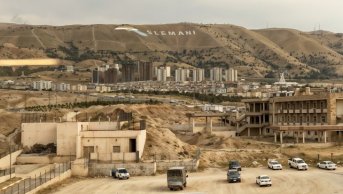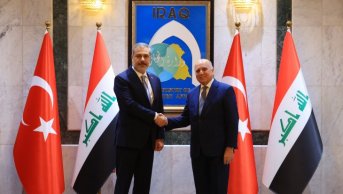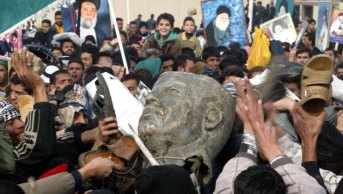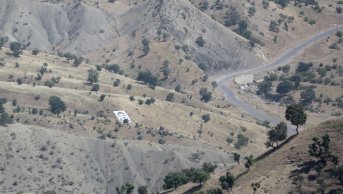What is Happening in Tuzkhurmatu?
The Town of Tuzkhurmatu, which is located in the Salahadin Province, is densely populated by Turkmen, and has attracted the attention of the international community following the terrorist attacks in the post-2003 period, particularly between the years 2012 and 2014. The international attention is drawn to the town once again with the conflict between the peshmerga forces of the Kurdish Regional Government (KRG) and the units of Hashid Shaabi on 12 November 2015. The conflict began when peshmerga opened fire on the Hashid Shaabi forces which went to Bastamlı district of Tuzkhurmatu, which was one of the first targets of ISIS in Salahaddin Province. After three members of the Hashid Shaabi were shot to dead, the conflict spread to the whole town and the clashes still continue. Despite the negotiations between the parties among which the Iraqi Turkmen Front was also involved in order to protect Turkmen, it is reported that the conflict still continues with civilians getting harmed. The continuation of the conflict with a trend of harming civilians holds the risk of expanding and spreading to the other regions when the social and political structure of Tuzkhurmatu is considered. Therefore, it is important to underline the strategic significance of Tuzkhurmatu and the dynamics of the conflict in order to better understand the events in Tuzkhurmatu and the resulting threat.
The Significance of Tuzkhurmatu
Tuzkhurmatu is unique due to its strategic location and complex social and political structure. It is a town with a population of 150,000 which is composed of Turkmen, Arabs and Kurds. Geographically, it is the main transit point on the Kirkuk-Baghdad road on the one hand and on the other hand, it is the border between KRG and the Iraqi central government. The Hamrin Mountains which are located on the west of Tuzkhurmatu is on the middle of this border. Thus, escalation of tensions about administrative and political control between KRG and the Iraqi central government is witnessed from time to time. Particularly, there are problems about the implementation of Article 140 of the Iraqi Constitution in Tuzkhurmatu which is one of the disputed areas. Peshmerga and the armed forces of Kurdish parties have been deployed in Tuzhurmatu since 2003, and a significant portion of Kurdish population from other areas was settled in Tuzhurmatu. By this way, it was intended to put pressure on Kirkuk via ensuring domination in Tuzhurmatu. KRG aimed at enlarging its borders through establishing control over disputed territories and containing Kirkuk. In addition, KRG developed a strategy of asserting dominance in oil-rich areas like Pulkhana of Hemrin Mountains which is located within the boundaries of Tuzkhurmatu. Hence, KRG deployed peshmerga in the Hamrin Mountains. KRG strived to assert control on the areas where the authority of the Iraqi central government has been weakened as a result of its struggle against ISIS. Herein, Tuzkurmatu becomes a significant point of connection. Peshmerga forces are located at the center of the line which starts from Hanekin in the middle of the Iran-Iraq border and transcends Calavla, Karatepe and Kifri to northwest and reaches Kirkuk. KRG's gaining control of this line turns out to be a strategic step since it will increase the isolation of Kirkuk from the Iraqi central government. However, this will bring in further dynamics for conflict.
The Events in Tuzkhurmatu and the Dynamics of Conflict
The recent events in Tuzhurmatu seem to be a conflict between peshmerga and the Hashid Shaabi at first glance, but in fact, it is comprised of different conflict dynamics. The risk of escalating tensions in Hanekin, Calavla, and areas surrounding Kirkuk where Peshmerga and Hashid Shaabi fight together against ISIS should not be ignored, because there are different militia groups like Badr Organization, Kata'ib Hezbollah, Asa'ib Ahl al-Haq and Saraya al-Salam within Hashid Shaabi. These groups fight against ISIS in different regions in common fronts with peshmerga. When the strong sense of belonging within Hashid Shaabi is considered, the conflict may possibly spread to the common fronts. Additionally, it is seen that regardless of the cease-fire in Tuzkhurmatu, the outside forces of peshmerga and Hashid Shaabi are entering Tuzkhurmatu. This, indeed, has the potential to enlarge the extent of the conflict.
On the other hand, the clashes in Tuzkhurmatu can be defined as a Kurdish-Turkmen conflict since almost all the members of the Hashid Shaabi in Tuzkhurmatu is composed of Turkmen. For this reason, Turkmen and Kurds, who confronted each other before in Tuzkhurmatu, have been drawn into conflict again. Thus, during the latest events the houses and workplaces of Turkmen were burned by the Kurds, and the military clashes turned into a social tension in Tuzkhurmatu. It is impossible to ignore the possibility that the Kurdish-Turkmen tension might spread to Kirkuk and the areas where Turkmen and Kurds live together from Erbil to Hanekin. It is highly probable that Tuzkhurmatu may become an issue of strain between Erbil and Baghdad. As known, there is an ongoing the disagreement between Erbil and Baghdad on several issues, one of which is the budget issue. Iraqi central government is supporting and trying to institutionalize Hashid Shaabi in the struggle against ISIS. Hashid Shaabi is currently under the authority of the National Security Council of Iraqi Prime Ministry.
It is highly likely that the Hashid Shaabi forces in Tuzkhurmatu will enforce the Iraqi central government to adopt a position against KRG. It is known that a group of Hashid Shaabi militia has entered Tuzkhurmatu. This is supposed to lead to an increase in the number of the actors involved in the conflict since the conflict started among the local forces in Tuzkhurmatu is expanding with the involvement of the additional outside forces. According to the incoming news, the members of the PKK terrorist organization are coming to Tuzkhurmatu to support peshmerga.
Last, but not the least, there is a concern that the conflict in Tuzkhurmatu may lead to provide a fertile ground for ISIS which conducted attacks in these areas before to regain its control. In case of such a situation, the holistic strategy of countering ISIS will possibly be adversely affected.
At this point, the parties in the conflict should undertake the responsibility of preventing the expansion of the conflict, which will not only disrupt the efforts for countering ISIS, but also result in a serious humanitarian crisis because of the massive harm it is inflicting and will inflict on the civilians. As stated before, Turkmen are the most suffered party in this conflict. The houses and workplaces of Turkmen are burned; Turkmen civilians are targeted by snipers and kidnapped. However, Turkmen in Tuzkhurmatu have been fighting against terrorism and protecting their identities. For this reason, it should be born in mind that unilateral steps about regions like Tuzkhurmatu and Kirkuk will not produce positive results. The unilateral steps will not go beyond harming civilians. That's why, all the parties, conflicting or not, including Iraqi central government, KRG, Iraqi Turkmen Front, Kurdish parties and Hashid Shaabi should undertake the responsibility to resolve the conflict through political compromise and consensus.










